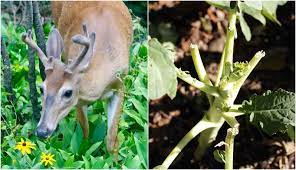Deer Off Grid: Finding Harmony with Nature’s Grace is a comprehensive guide that delves into the fascinating world of deer and their interactions with humans in off-grid living environments. In today’s modern society, more people are seeking alternative ways of living, disconnected from the grid and embracing a self-sustaining lifestyle. However, as these individuals venture into the wilderness to build their own haven, they often encounter various challenges – one of the most prominent being the presence of deer.
These elegant creatures, known for their grace and beauty, can become quite a menace when they disrupt gardens, destroy crops, or pose threats to livestock. Nevertheless, this article aims to shed light on how we can coexist harmoniously with deer in off-grid settings. By understanding their behavior, implementing effective deterrent techniques, and fostering a balanced ecosystem, we can ensure a peaceful cohabitation between humans and deer while respecting the delicate balance of nature’s rhythm.

Understanding Deer Behavior
To coexist harmoniously with deer in off-grid settings, it is essential to have a deep understanding of their behavior. Deer are highly adaptive creatures that have learned to thrive in both rural and urban environments. They are most active during dawn and dusk, making these periods crucial for observing their patterns and movements. By understanding their feeding habits, preferred shelter locations, and mating rituals, off-grid dwellers can strategize and protect their gardens and crops effectively.
Deer are notorious for their voracious appetites, particularly when it comes to plants and crops. They can quickly decimate a garden if left unattended. It is vital for off-grid enthusiasts to employ effective deterrent techniques to prevent the destruction of their hard work. Physical barriers, such as fences or netting, can be effective in keeping deer out of gardens and protecting crops. Additionally, using noise deterrents like wind chimes or motion-activated sprinklers can startle deer and discourage them from venturing into areas where they are unwanted. For more in-depth techniques on how to keep deer out of your garden living off-grid, uncover more.
Fostering a Balanced Ecosystem
In off-grid living environments, it is crucial to foster a balanced ecosystem that respects the delicate balance of nature’s rhythm. Instead of solely focusing on deterring deer, it is essential to embrace practices that create an environment where they can coexist peacefully. Planting deer-resistant species and creating designated feeding areas can help divert their attention from gardens and crops. At the same time, encouraging natural predators like coyotes or wolves can help maintain a healthy deer population. By implementing these strategies and understanding the importance of maintaining a harmonious ecosystem, off-grid dwellers can enjoy the beauty of deer while safeguarding their livelihoods. For a more extensive guide on how to keep deer out of your garden living off-grid, uncover more.
In conclusion, coexisting harmoniously with deer in off-grid settings requires a deep understanding of their behavior and implementing effective deterrent techniques. By observing their patterns and movements, off-grid dwellers can strategize and protect their gardens and crops from deer damage. Employing physical barriers and noise deterrents can help prevent the destruction of hard work. However, it is also essential to foster a balanced ecosystem that respects the delicate balance of nature’s rhythm. Planting deer-resistant species, creating designated feeding areas, and encouraging natural predators can all contribute to peacefully cohabitating with deer while safeguarding livelihoods. Embracing these practices allows off-grid enthusiasts to enjoy the grace and beauty of deer while maintaining a self-sustaining lifestyle.
